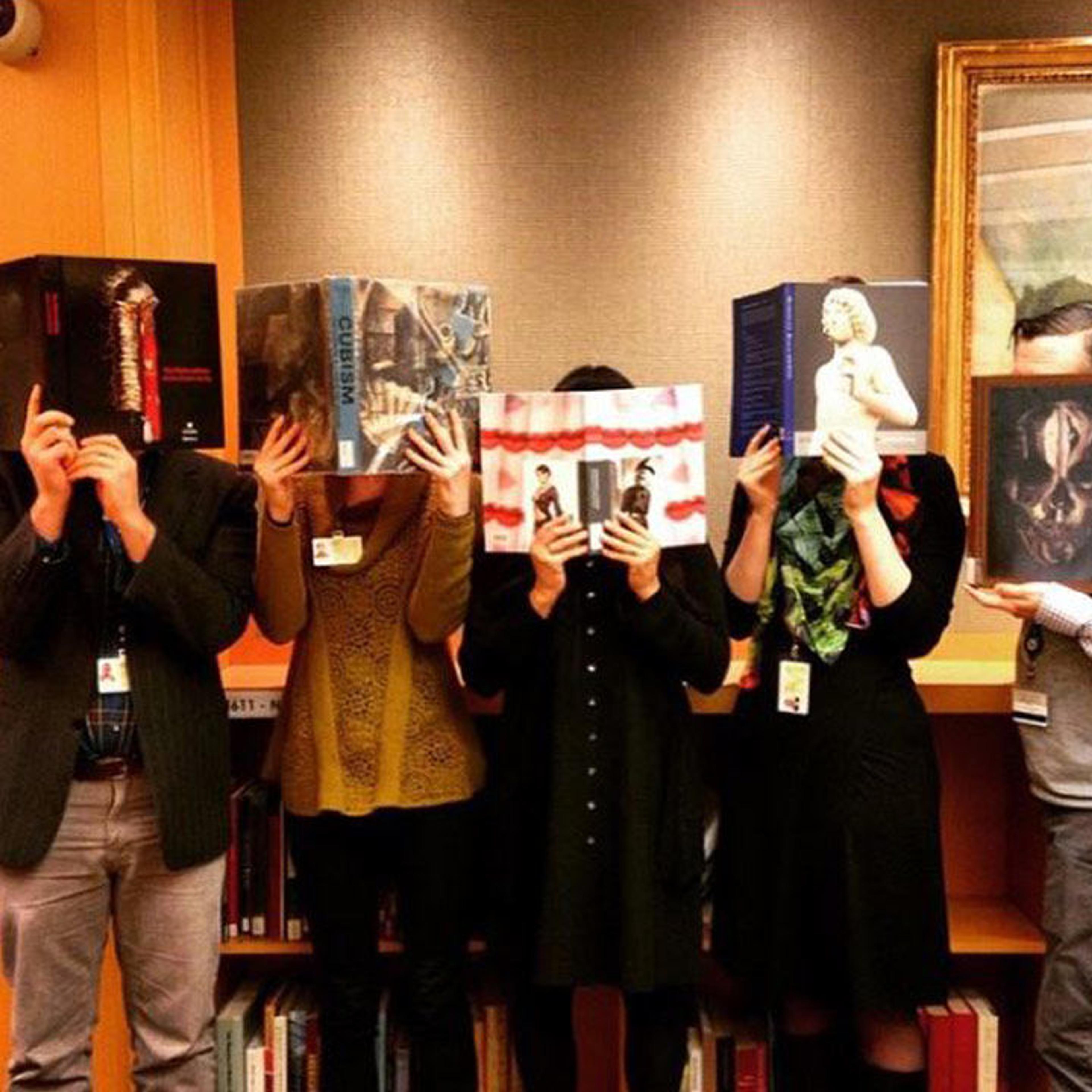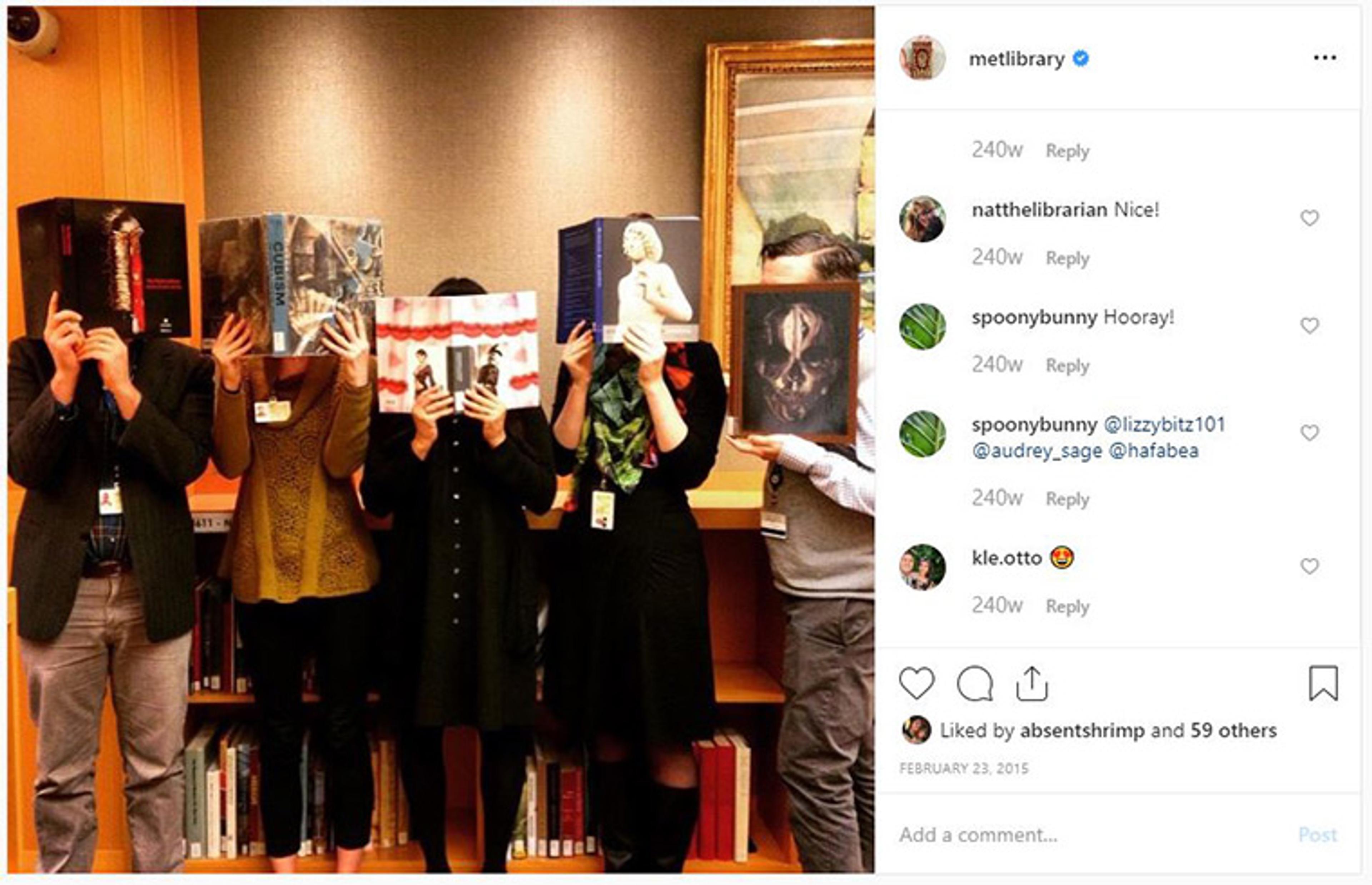
Watson Library’s (@metlibrary) first Instagram post, February 23, 2015
Watson Library is celebrating The Met’s 150th anniversary with a series of blog posts on the history of the library. This particular installment will focus on a more recent development in the library’s history: our engagement with social media.
In 2013, we decided to wade into the uncertain waters of what at the time was still being called “Web 2.0,” creating a Pinterest board in March and a Facebook profile in August. We enjoyed our foray into web sociability, so launched a blog (the very one you are reading right now) on July 2, 2014 and an Instagram profile on February 23, 2015.
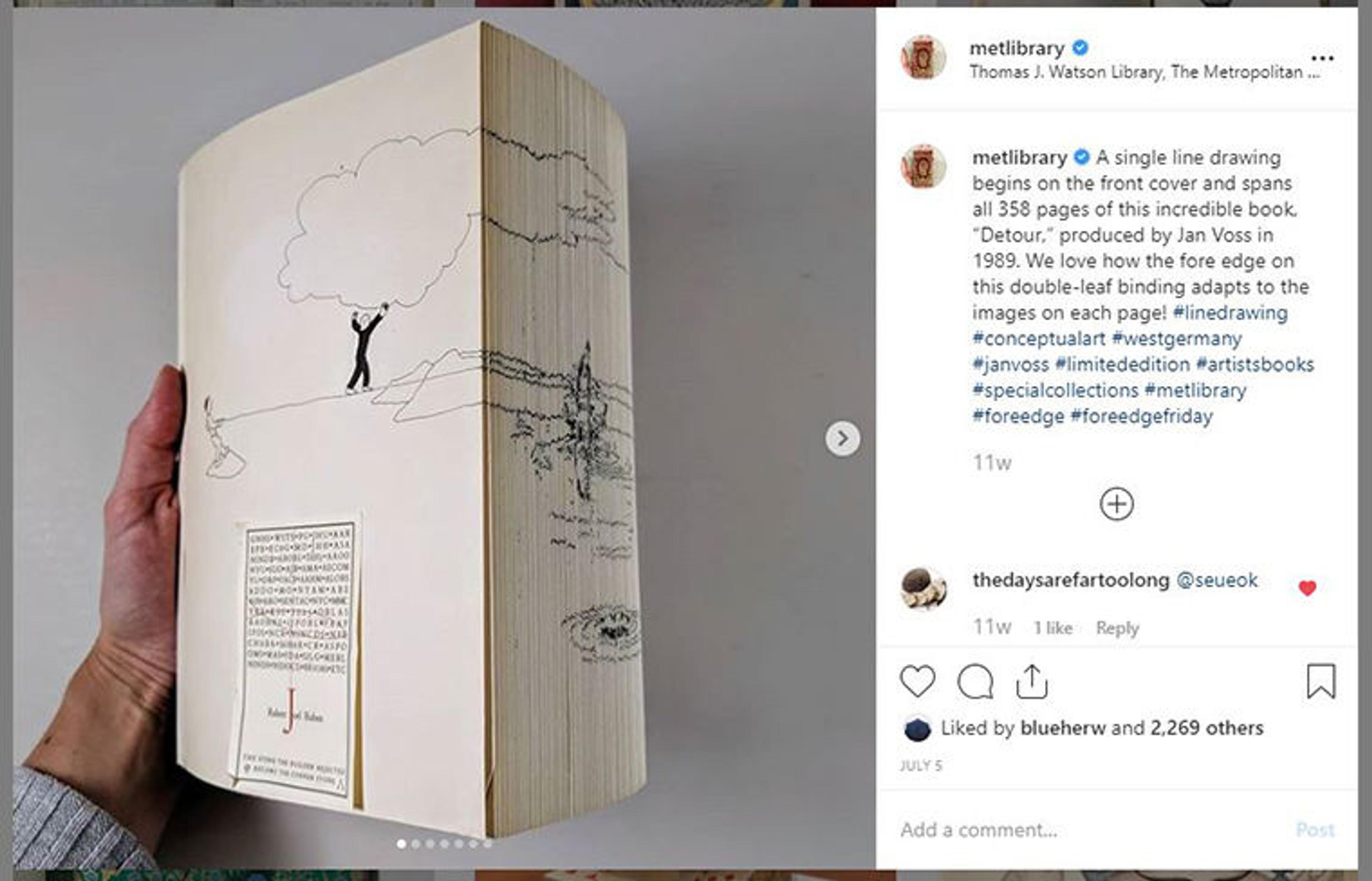
Our second most popular Instagram post to date, from July 5, 2019. Our most popular post ever is this short video.
Our first few years online were exciting, filled with experimentation and playfulness, but they were also filled with uncertainty. Who were we reaching? What sort of story were we telling about ourselves? And, most pressingly, why did any of this matter? When these existential questions began to creep in, it became clear that we needed to approach our engagement with these platforms in a slightly more strategic manner. From our years of experience, we had formed inchoate impressions of what sort of content worked on which platform, but we wanted a way to formalize our approach to social media. Instead of simply going on instinct, it was time to begin working more deliberately, so in 2016 we formed a group to develop a set of social media policies and guidelines. The general guidelines are available through The Met’s website, but we developed a much more robust set of internal policies and guidelines, some of which are discussed in a recent Art Documentation article.
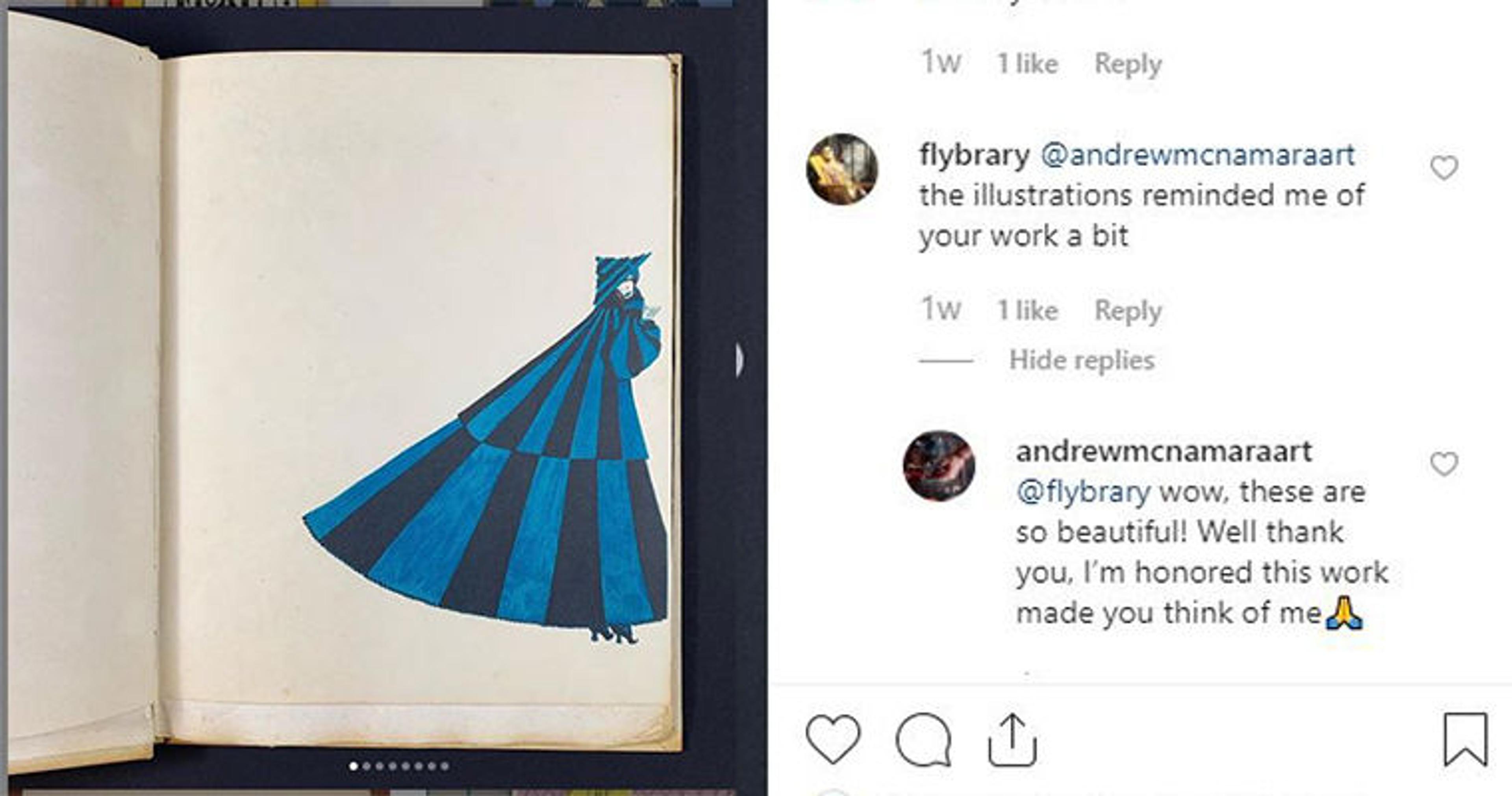
We love the conversations that can be fostered through Instagram.
With our policies and guidelines firmly in place, we have managed to create some great content over the years. What we find most exciting about being on Instagram, for instance, is the engagement we get. Above you can see our ninth most popular Instagram post to date, and you’ll see that I’ve highlighted a few of the comments. In it you can see one user mentioning that the image we posted reminds them of work by the artist @andrewmcnamaraart, and they tagged the artist in their comment. The artist then replied, “Wow, these are so beautiful! Well thank you, I’m honored this work made you think of me.” These sorts of connections—between our collections, Instagram users, and working artists—are what make platforms like this so fulfilling.
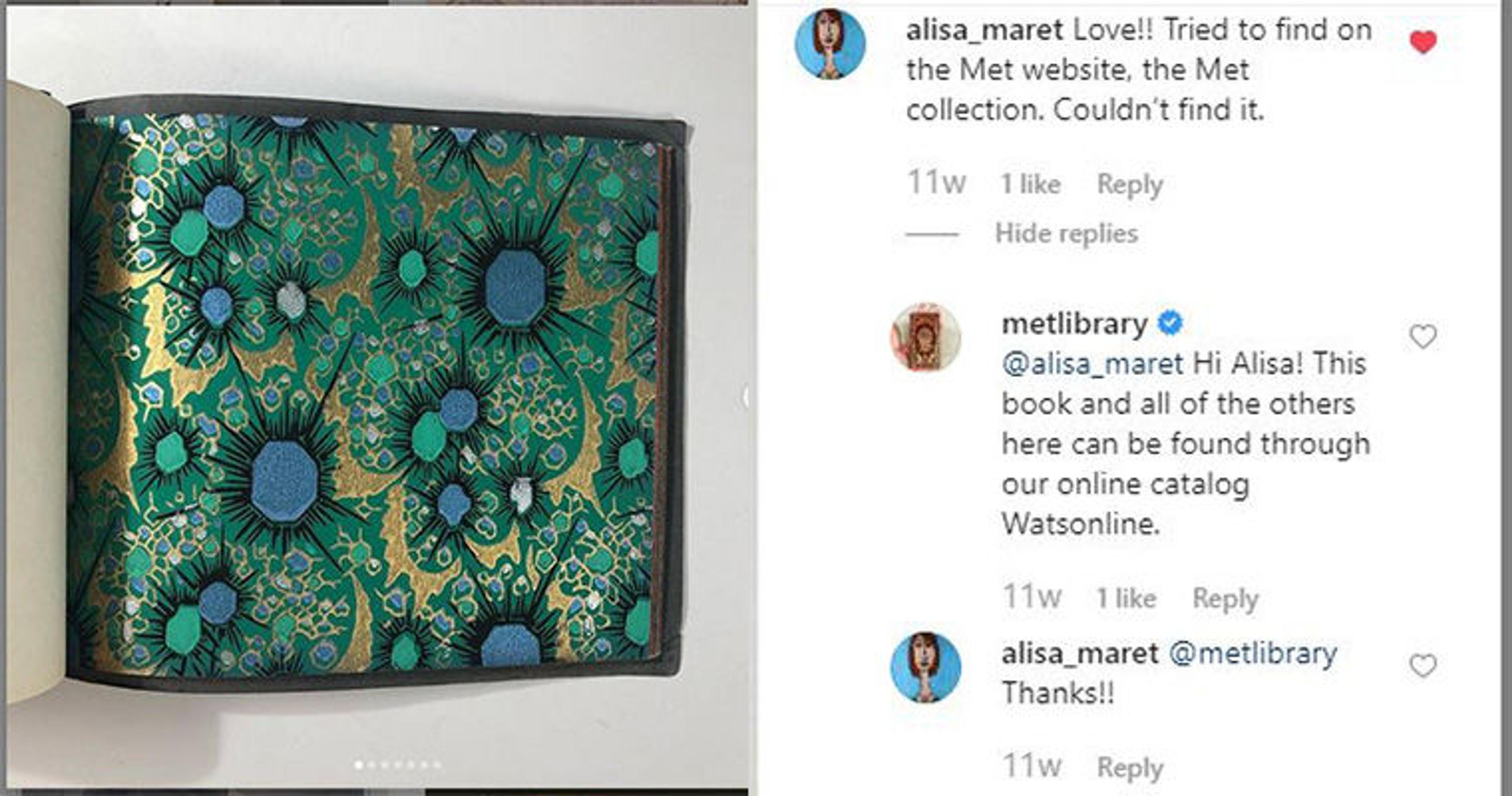
Our sixth most popular Instagram post ever
Above is another instance of how information about our collection can be shared on Instagram. A user commented, “Love!! Tried to find on the Met website, the Met collection. Couldn’t find it.” As a rule we read all the comments we get, so we were quick to respond, letting the user know that they wouldn’t be able to find the book on the Museum’s collection online (a resource for finding objects in The Met), but that they should instead search Watsonline, the library’s online catalogue. Enabled to find what they were looking for, the user responded, “Thanks!!” So we’ve found that these platforms can be used as reference tools as well.

Geography demographic from Iconosquare
Also, social media allows us to reach a truly international audience, as shown in the demographic breakdown above. You can see that our Instagram account has, predictably, the most followers in New York City, but, unexpectedly, four of the top six “top cities” (i.e. where the most of our followers live) are international. These are audiences it is hard to imagine reaching through other means.
Though these social media tools haven’t been around nearly as long as The Met, they are helping us deliver on the Museum’s mission to “connect people to creativity, knowledge, and ideas.”
And, of course, be sure to follow us! (You can do so here, here, here, and here.)
